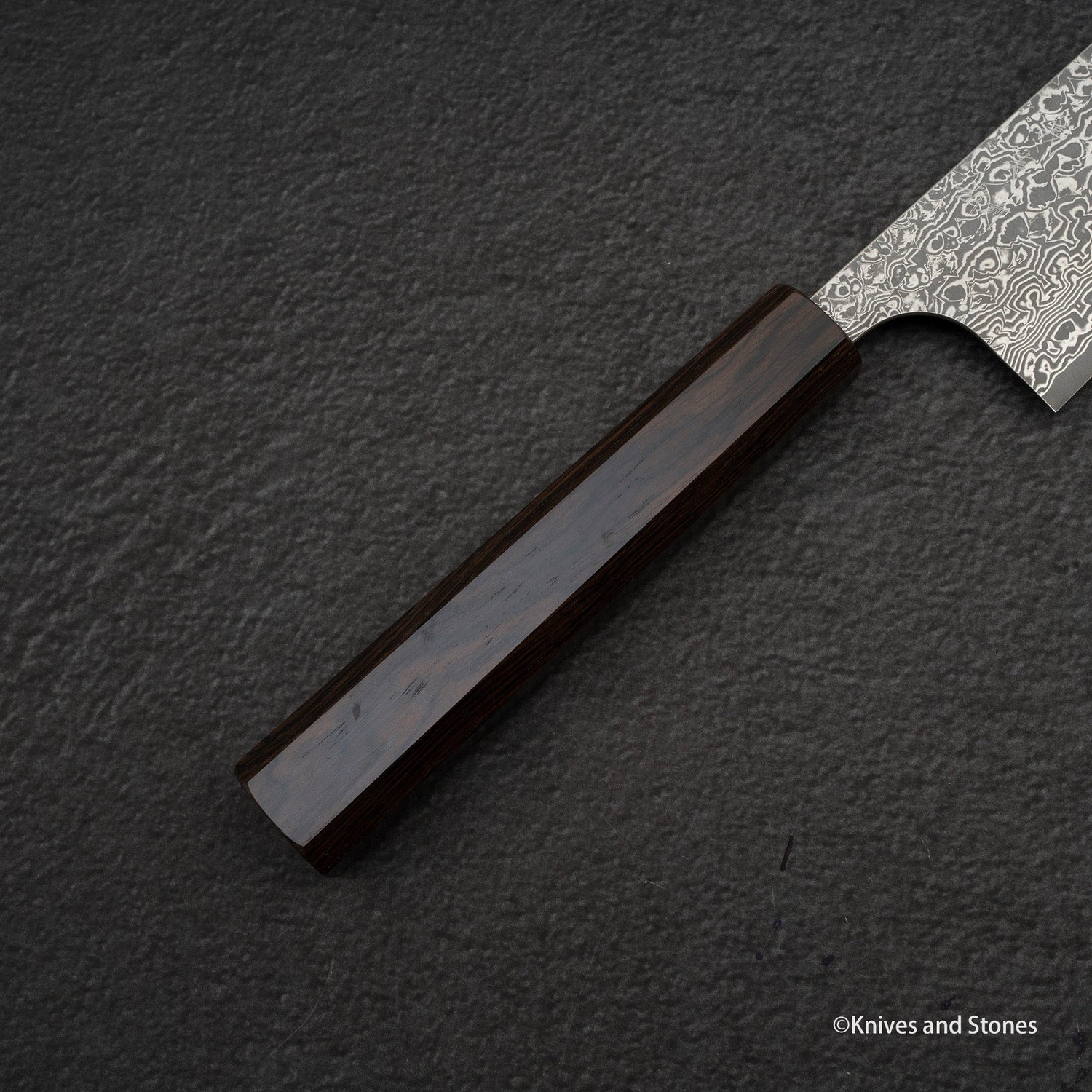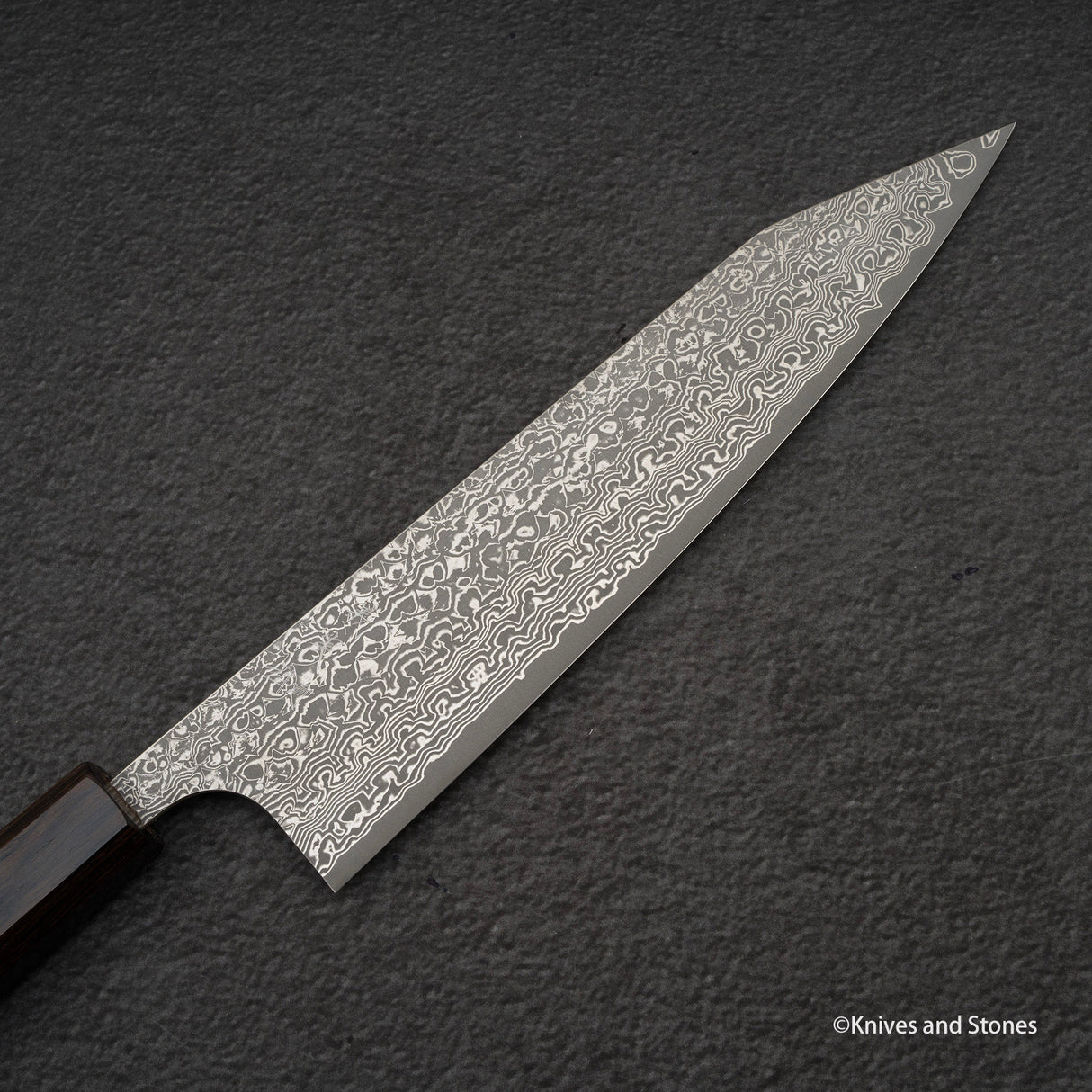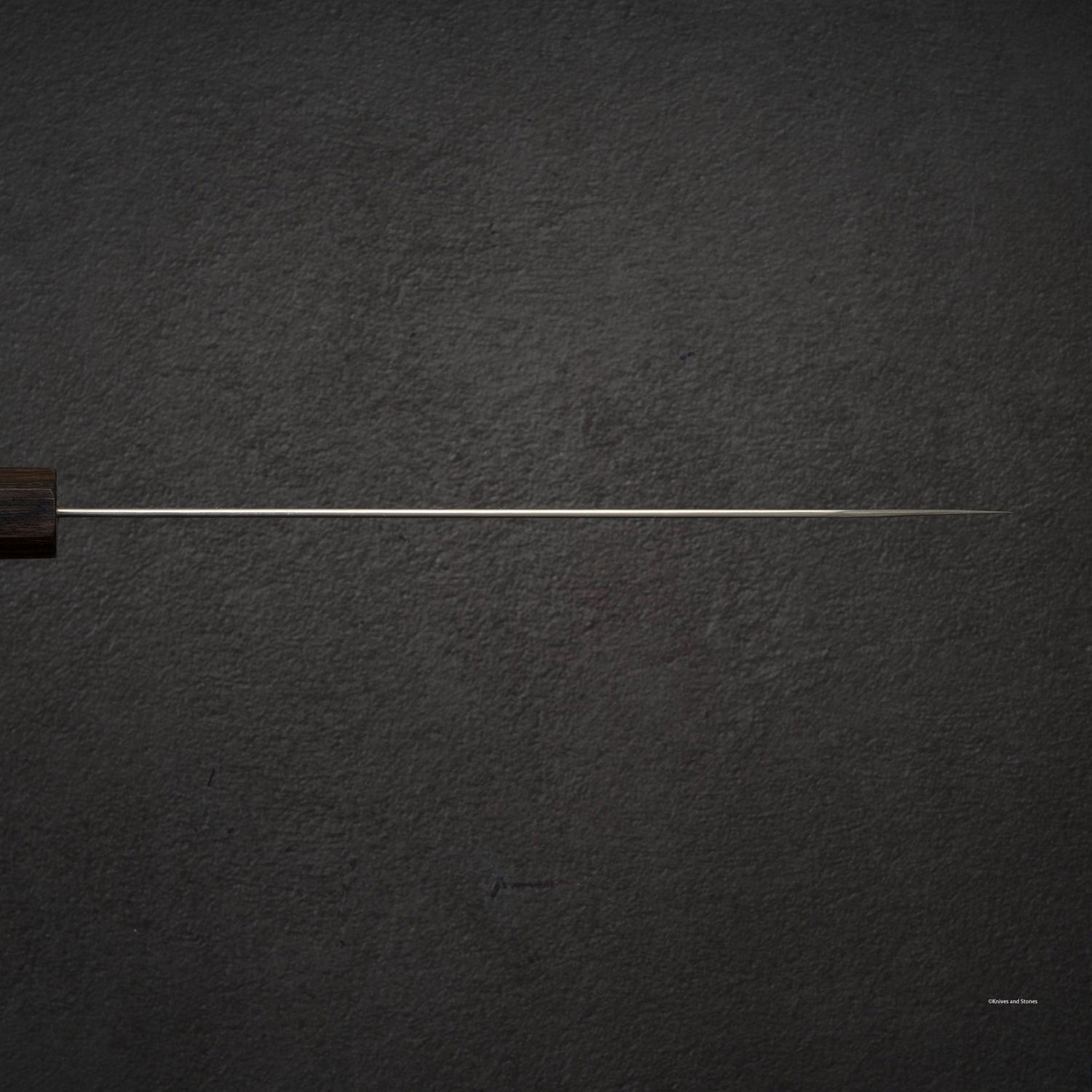Yoshimi Kato VG10 Etched Damascus K-tip Gyuto 210mm Ebony Handle
Yoshimi Kato VG10 Etched Damascus K-tip Gyuto 210mm Ebony Handle is backordered and will ship as soon as it is back in stock.
Couldn't load pickup availability
K&S Price: AU $418.98* inc. tax , vs:
| Hocho Knife | AU $758.53 | -81.47% |
* For overseas buyers you pay no GST (10%) and low shipping rate.
Last Update: 2024-12-26T01:02:08Z
Detailed Specifications
| Line | Yoshimi Kato VG10 Kurozome Damascus |
| Profile | Gyuto / Chefs Knife |
| Bevel Type | Double Bevel |
| Weight | 164 g 5.78 oz |
| Edge Length | 215 mm .8.46 inch |
| Heel Height | 47 mm .1.85 inch |
| Width @ Spine | 1.7 mm 0.07 inch |
| Width @ Mid | 2.0 mm 0.08 inch |
| Width @ 1cm from Tip | 0.5 mm 0.02 inch |
| Steel | VG10 | Stainless |
| Blade Construction | Sanmai - Stainless Damascus Clad |
| Hardness (HRC) | 59 - 61 |
| Handle | Octagonal Ebony |
| Region | Echizen |
| Best for |
|

Video Review
| Pros | Cons |
|
|
|
Care Instruction
- Don't cut hard things! Japanese knives are brittle so bone hacking is a NO NO!
- Wash with neutral detergent after use, and wipe dry;
- Please don't wash knife with dishwasher, it will damage the wood handle;
- Be careful not to leave the knife close to a heat source for a long time;
- It is a lot more dangerous to cut with a blunt knife than a sharp knife!
- It is best to sharpen a Japanese knife regularly on a waterstone.





















